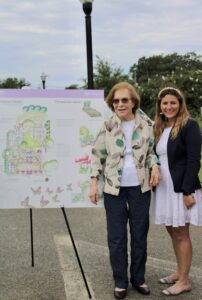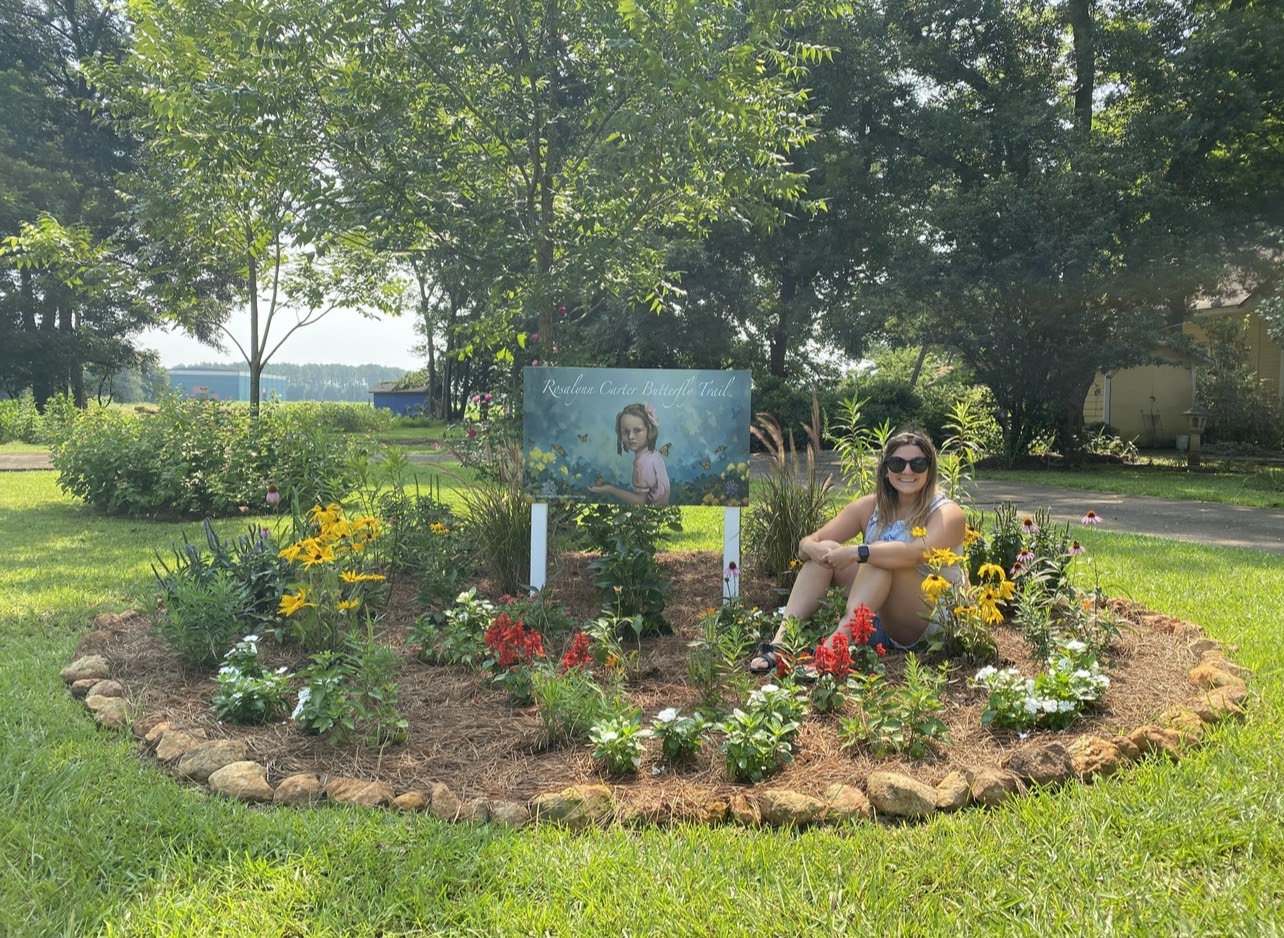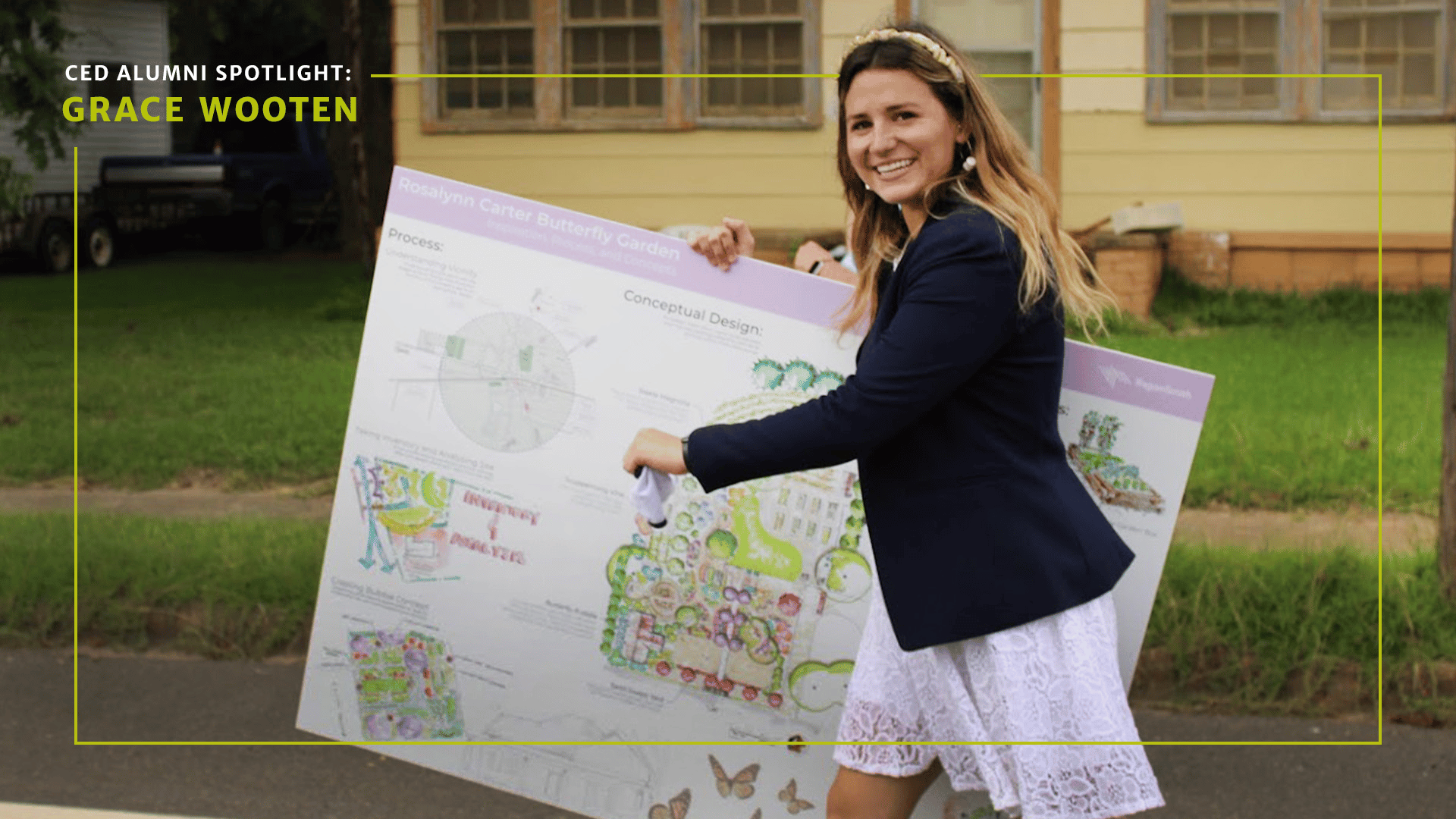For Grace Wooten, moving away from home and starting college in a new city wasn’t an easy task. Feelings of inadequacy and self-doubt made it difficult at first, but after taking a freshman odyssey course taught by CED professor David Spooner, Wooten found purpose as a landscape architecture student.
“At first, I thought my only career options were doctor, nurse or teacher which was very naïve as a college student,” she said. “I remember telling Professor Spooner, ‘Wow, I really wish I could do this for a living.’”

And as it turned out, she could.
Wooten’s first-ever landscape architecture project consisted of redesigning her favorite place: her parent’s house on 25 acres in Ellaville, a rural town not far from Americus, Georgia. As she worked on the project, diving into the design process helped build her self-confidence and pivot her toward success. Once she finished, Wooten didn’t hesitate to declare her major as landscape architecture. “I transferred into the program that fall semester,” she said.
Wooten loved the small class feel that the CED provided: “It felt like I was in high school again,” she said. “And that might not be for everyone, but for me, that was my comfort zone.”
After a few years in the program, those familiar feelings of imposter syndrome crept in, causing Wooten to doubt her choice of major. “As everybody does, I hit this lull and began questioning my career path,” she said, “because there are so many career paths that you can take.”
Then, something exciting happened. Wooten signed up for a design charrette, a multi-day, collaborative exercise that addresses community planning issues. The charrette was organized by the CED’s outreach unit, the Center for Community Design and Preservation (CCDP), and it focused on revitalizing the Briar Creek Battlefield in Sylvania, Georgia. Throughout the charrette process, Wooten worked closely with charrette coordinator Jennifer Lewis, now CCDP Director, and discovered a love for redesigning spaces in small towns. “This experience was a moment where I finally felt like I shined,” Wooten said.

Lewis loved watching Wooten grow and become more confident throughout the process. “Over three days, I witnessed Grace blossom as she embraced the chaos with good humor and emerged as a leader among her peers,” Lewis said.
And when a second charrette opportunity arose in Wooten’s home county, Lewis knew just who to contact. “Grace took on greater responsibilities as hostess and tour guide as well as designer and continued to volunteer after the charrette to present our ideas to the community,” she said. “Her ability to make genuine connections and empathize with local needs makes her a highly effective designer.”
Wooten’s engaging personality helped secure her first job after college, which was an exciting moment because it proved that she had made the best decisions for herself, leading to a successful career outcome.
More recently, Wooten transitioned to RaganSmith, a multi-disciplinary consulting and development firm that specializes in engineering, landscape architecture and land planning. Her new job allows her to focus on her passion: revitalizing small towns in South Georgia. That passion has made it possible for her to work on a variety of design projects close to home, including consulting with the late First Lady Rosalynn Carter to design an education hub for the Rosalynn Carter Butterfly Trail Organization. Wooten worked directly with Carter to bring her vision to life — a very special, once-in-a-lifetime experience, Wooten said.

Wooten has also consulted with other Southwest Georgia municipalities, helping design the Pearly Brown Music Park and Amphitheater in Americus, Georgia, and the Josh Gibson Park in Buena Vista.
“Witnessing how landscape architects can impact and promote smart growth and tourism in smaller rural towns made me realize that this is what I wanted to do for a career,” said Wooten. “At the CED, I found that niche of loving to work with small towns and being part of a community, ultimately by listening and aiding in communicating their histories and stories through the landscape.”
Click here to learn more about the Rosalynn Carter Butterfly Trail Initiative.


